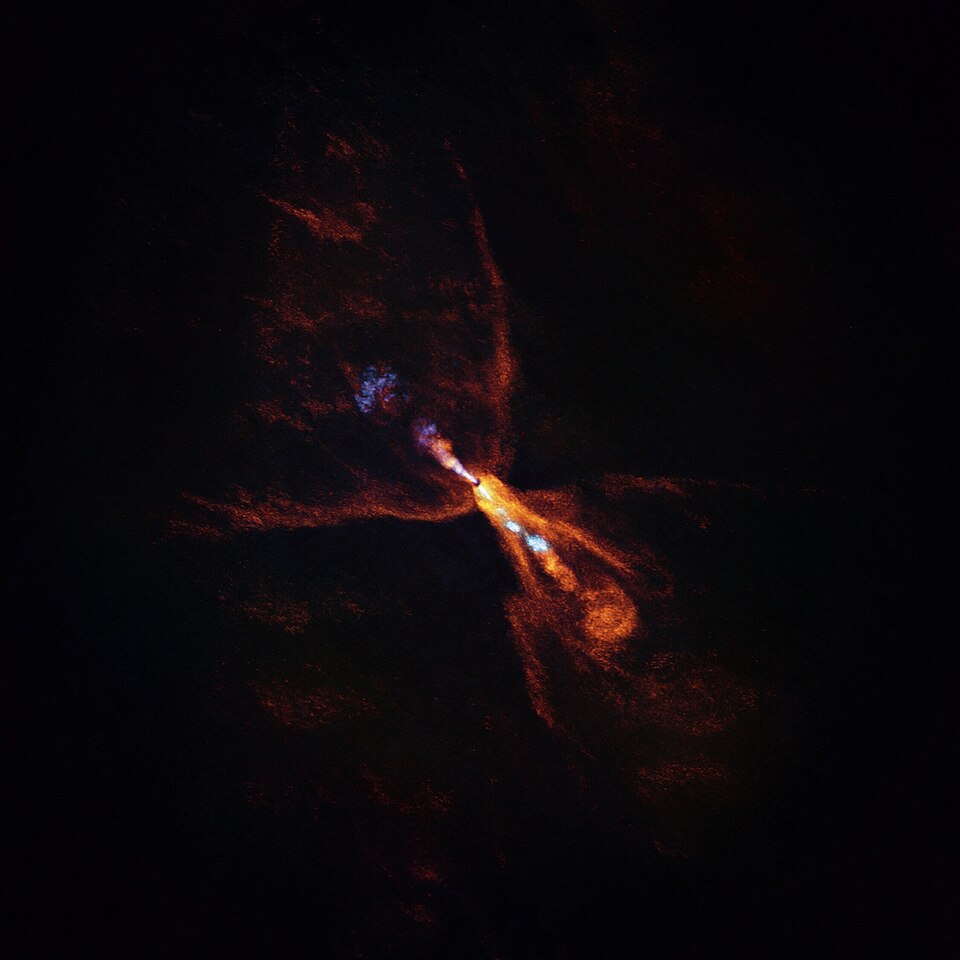Astronomers Capture First Evidence of Planet Formation Around HOPS-315

Astronomers have made groundbreaking observations of the initial stages of planet formation in a distant solar system, marking the first time such a phenomenon has been witnessed. Utilizing the cutting-edge capabilities of the James Webb Space Telescope (JWST) and the Atacama Large Millimeter/submillimeter Array (ALMA), researchers observed the star HOPS-315, located approximately 1,300 light-years away in the constellation Orion, as solid grains began to crystallize around it. This pivotal discovery offers a rare glimpse into the processes that may have led to the formation of our own Solar System around 4.5 billion years ago.
The findings were led by Melissa McClure, an astrophysicist at Leiden University in the Netherlands, and her international research team. According to McClure, the observations reveal a protoplanetary disc where gas-phase silicon monoxide (SiO) and crystallizing silicates coexist in a region comparable to the location of our asteroid belt. "This process has never been seen before in a protoplanetary disc, or anywhere outside our Solar System," stated Edwin Bergin, a co-author of the study from the University of Michigan.
The significance of this discovery lies in its potential to enhance understanding of how planets form from solid material. The presence of both gas and solid forms of silicon at the same location indicates that condensation is occurring in real time. This observation provides not only a snapshot of the early stages of planetary assembly but also serves as a live laboratory that mirrors the conditions of our Solar System's formation.
The research team employed the JWST to collect infrared light that penetrated the dust surrounding HOPS-315, revealing the distinct signature of hot SiO molecules, which glow at approximately 2,200°F. ALMA then mapped the same region at millimeter wavelengths to confirm the presence and location of these minerals. This dual approach allowed scientists to differentiate the signals from the star's jets rich in SiO from those of the disc material.
The detection of crystalline silicates suggests that conditions exist in HOPS-315 similar to those that created early building blocks of Earth, providing a comparative framework for understanding planetary formation processes. Logan Francis, a co-author from the Advanced Functional Fabrics of America, emphasized that the observed minerals mirror those found in ancient meteorites on Earth. He noted that the condensation zone is located at an orbital radius akin to our asteroid belt, indicating a parallel between the two systems.
Historical context plays a crucial role in interpreting these findings. The Solar System's formation is thought to have commenced with the condensation of minerals from a vapor state approximately 4.567 billion years ago. The new observations from HOPS-315 suggest that such processes may occur significantly earlier in the lifecycle of a star, thereby expanding the timeline for when planets can begin to form. Elizabeth Humphreys from the European Southern Observatory, who was not involved in the study, expressed her admiration for the team's ability to identify the first solids, stating it reveals a universe in which the steps toward life-bearing planets may start earlier than previously believed.
The implications of this discovery extend beyond mere academic interest. Understanding the conditions and processes that lead to planet formation could inform theories about the prevalence of rocky planets in the universe and the potential for life beyond Earth. Future observations of HOPS-315, including a search for water ice in the protoplanetary disc, will further elucidate the dynamics of this solar system's evolution. The anticipated findings may shed light on the migration patterns of planetary building blocks and their subsequent influence on the composition of terrestrial planets, including the presence of oceans.
In conclusion, the observation of HOPS-315 stands as a landmark achievement in astronomy, providing invaluable insights into the formative processes of solar systems. As researchers continue to analyze this exceptional data, the study promises to refine our understanding of planetary formation and the early conditions that may lead to habitable worlds. The research is published in the journal Nature, highlighting its significance in the field of astrophysics.
Advertisement
Tags
Advertisement





